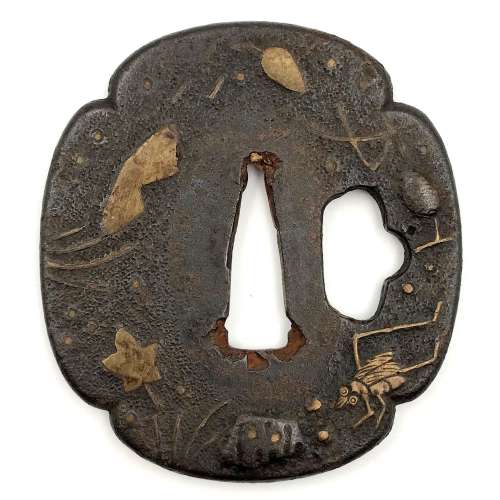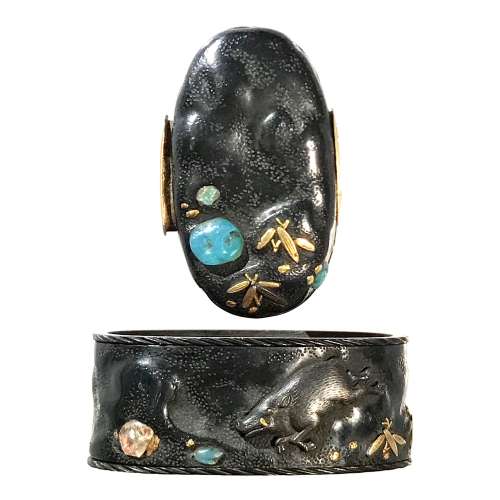
Tsuba Kanshoki, 1975, p. 61: Heianjō tsuba, Momoyama Period.


Tsuba Kanshoki, 1975, p. 61: Heianjō tsuba, Momoyama Period.

Fuchi-kashira with rock and boar (iwa ni inoshishi zu) motif. Inlay of precious stones or colour glass. Shakudō, gold, gemstones. Technique: Sukibori zogan kiniroe.
Fuchi: 36 x 21 x 14 mm; Weight: 22 g; Kashira: 32 x 17 x 5 mm; Weight: 8 g; Material : Shakudō; Gold; Gemstones (Chalcedony and Rose Quartz). Possibly, Owari school.